Those of us with pets will do whatever it takes to keep them happy and healthy—but that’s not exactly an inexpensive prospect. From buying the best food and toys to regular vet visits, the price of being a pet parent can really add up over time. And with the cost of living still higher than we’d like, those additional bills can really add up. With that in mind, we reached out to financial experts to find out how to lessen the burden. Read on to discover the nine best ways to save money on pet care.
RELATED: Is Pet Insurance Worth It? Understand the Pros and Cons.

A total of $147 billion was spent on pets in the U.S. last year, according to the American Pet Products Association (APPA). This includes about $64.4 billion in pet food and treats; $32 billion in supplies, live animals, and over-the-counter medicine; $38.3 billion in vet care and product sales; and another $12.3 billion in other services such as boarding, grooming, insurance, training, pet sitting, pet walking.
That number is only expected to increase this year, with a total of $150 billion in pet-related sales projected for 2024. It’s no surprise, then, that the high cost of pet care is a significant concern for the 82 million U.S. households that own a pet.
A 2024 survey conducted by Redfield & Wilton Strategies on behalf of Newsweek revealed that 72 percent of pet owners say the cost of looking after their pets has increased in the past year. On average, cat and dog owners spend around $1,200 to $1,400 each year, respectively, on their pet. As pet care costs rise, 43 percent of pet owners admit that they are either very or fairly concerned about their ability to continue financially supporting their pet.
If you fall into that boat, you’ll want to read on for these expert-backed tips that will help you save money on pet care.
RELATED: The Most and Least Expensive Puppy Breeds to Own, New Data Shows.

Medication costs are rising for all of us, and that includes our pets. But bypassing a physical pharmacy to find what your pet needs online can help bring expenses down, according to consumer savings expert Andrea Woroch.
“If your pet gets sick and needs medicine, wait to buy it online as long as it isn’t an emergency,” she advises. “You can also save by requesting generic meds instead of the name-brand option.”
To make sure you’re getting the best price on your pet’s medications, you can even compare costs online through GoodRx’s website.
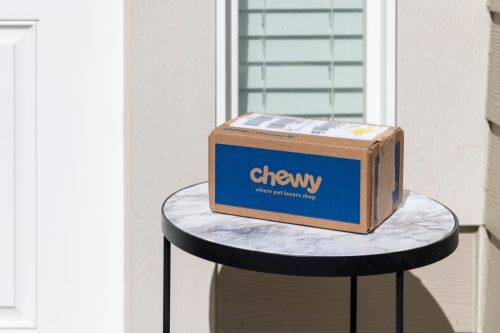
If you regularly buy the same food and supplies for your pet, Woroch also recommends looking into subscription options.
“Setting up auto-shipments can offer savings of 5 to 10 percent off,” she notes. “It also ensures you have everything you need for daily pet care at the best price so you don’t find yourself running out to the nearest convenience store to pick up items that could likely be marked up.”
One example is Chewy.com, Woroch suggests. This online pet retailer offers 5 percent off auto-ship orders with free delivery, plus a potential 35 percent off discount for your first order.
RELATED: 14 Practical Ways to Save Money Each Month.
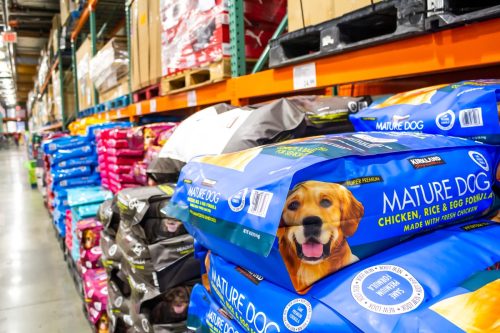
Speaking of the products you need to purchase again and again for your pet, some can be bought in bulk in order to “significantly reduce costs,” says Dennis Shirshikov, finance expert and professor at the City University of New York (CUNY).
“Many retailers offer discounts for bulk purchases, and this approach also reduces the frequency of shopping trips, saving time and transportation costs,” he explains.
In fact, Abid Salahi, financial expert and co-founder of FinlyWealth, says that buying pet food and supples in bulk can often result in discounts of up to 30 percent.
“I’ve saved over $200 annually by purchasing my cat’s food in 30-pound bags instead of smaller quantities,” he shares.
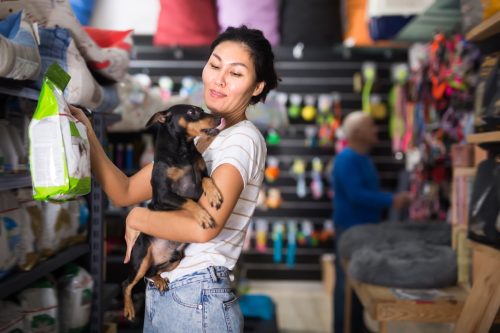
Don’t forget to pay attention to what the stores you frequent have to offer in terms of rewards. Most retailers that sell pet products, including big-box chains and grocery stores, will have some type of loyalty program that can help you save as a frequent shopper, according to Mary Hines Droesch, head of consumer, small business, and wealth management banking and lending products at Bank of America.
“Be sure to enroll in any available loyalty programs to earn points and discounts as you shop for pet supplies,” she advises.
RELATED: 10 Ways to Save Money by Going Green, According to Financial Experts.
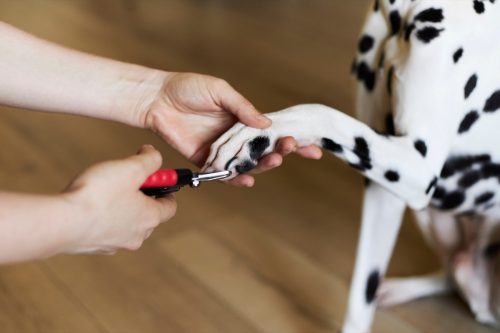
Taking your dog to a professional groomer can cost up to $100 per session, according to Salahi. This can add up significantly over the course of a year. So if you want to save over $1,000 annually, he says it may be worth it to learn how to groom your pets at home.
Shirshikov agrees, adding that “investing in grooming tools and learning basic techniques can help maintain your pet’s hygiene without the recurring expense of grooming services.”

You may also want to consider other DIY approaches to pet care if you’re looking to save.
“Preparing pet food at home using veterinarian-approved recipes can be more cost-effective than buying premium pet foods,” Shirshikov offers.
This advice can help you avoid spending money on expensive pet toys as well, according to Shaun Bettman, finance expert with Eden Emerald Mortgages.
“Think about making your own homemade pet toys, as there are many simple and safe DIY options that pets love,” Bettman says. “This can be a fun and cost-effective way to provide enrichment for your pet.”

As veterinary costs rise, “pet insurance can be a financial lifesaver,” according to Salahi.
“A comprehensive plan costs around $500 annually, but can cover up to 90 percent of unexpected medical expenses, potentially saving thousands in emergencies,” he explains.
Don’t forget to take the time to consider your different options, Bettman adds.
“Comparing different insurance plans and choosing one that fits your pet’s needs and your budget can save money in the event of a costly medical issue,” he says.
RELATED: 9 Ways to Save Money on Household Essentials, According to Finance Experts.
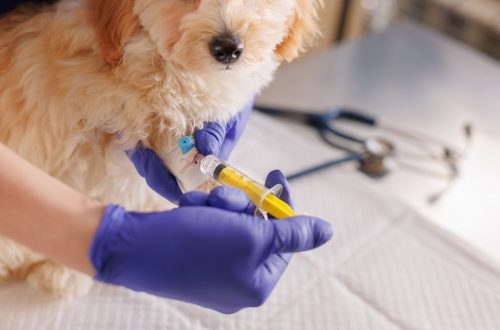
Another way you can try to avoid costly treatments for your pet is through preventative care.
“Regular check-ups, vaccinations, and dental care can prevent more serious and expensive health issues down the line,” Shirshikov notes.
Regular check-ups and vaccinations may seem costly upfront, Salahi admits, “but they can actually save pet owners thousands in the long run by preventing expensive health issues. For instance, treating parvovirus can cost up to $5,000, while the vaccination is typically under $100.”

If you are experiencing financial hardship and having trouble affording medical care for your pet, don’t be afraid to “ask your vet about special financing programs or negotiating a payment plan,” Woroch recommends.
“Some may even offer reduced prices based on your income,” she says.
You should also consider researching low-cost clinics or veterinary schools for routine care, according to Salahi.
“Some offer services at up to 50 percent less than traditional veterinary practices,” he explains.
In some places, there are even free clinics that may offer vaccinations and other treatments for your pet at no cost to you, depending on your financial situation, Woroch adds.
